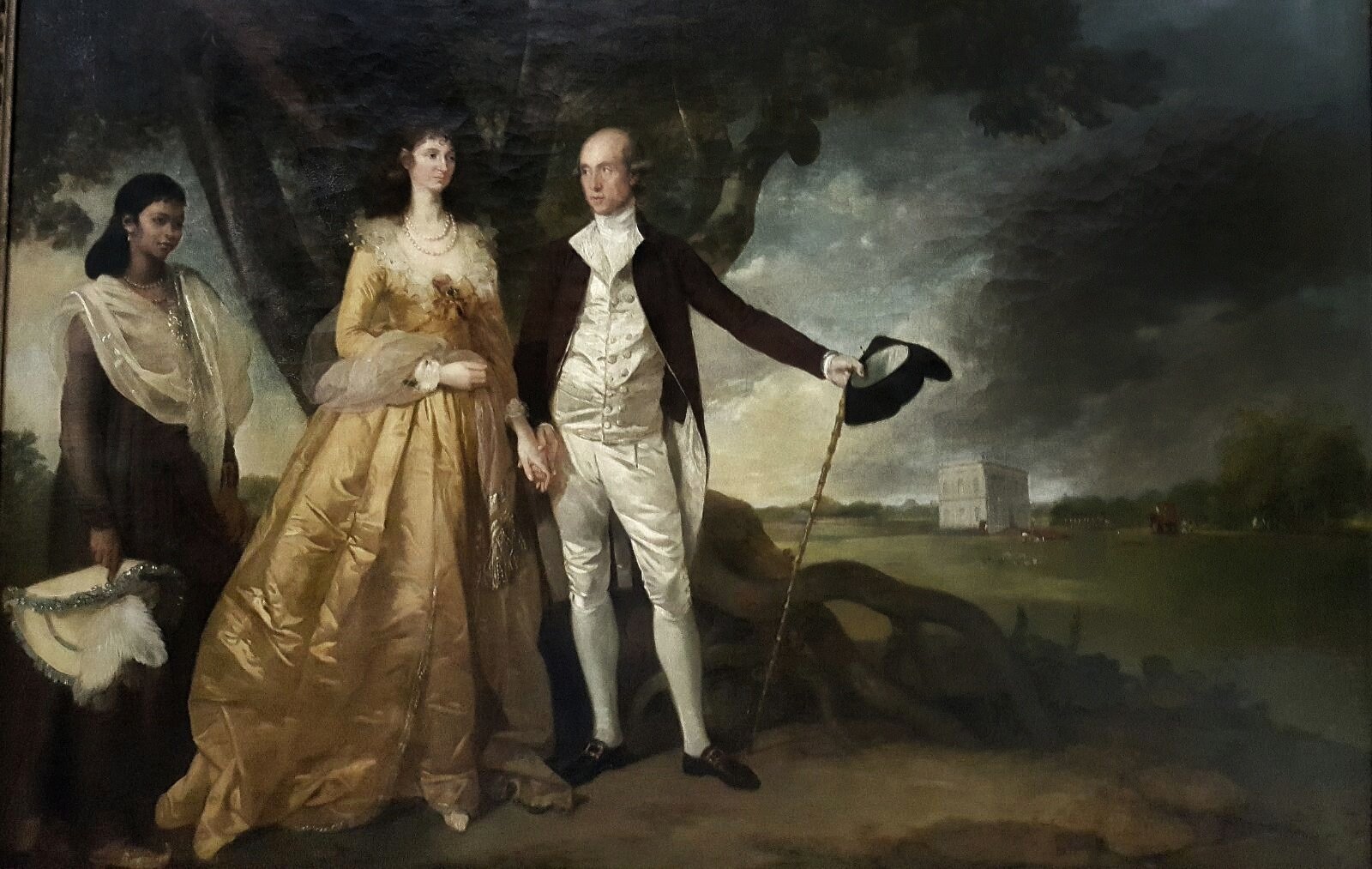Penang Chronicles Volume II
Pearl
John Keay
‘A History of the English East India Company’
“Enthralling. Gan brings a forgotten hero back to rumbustious life.”
About Pearl
-
Light accepts a marriage of convenience to Martinha Rozells, a well-connected local girl, the eponymous ‘pearl’, of the novel, sailing off without her to make his fortune at the court of the King of Siam. He is often unfaithful; it is several years before their relationship blossoms. Later in Calcutta, Martinha is introduced to the prejudices of British society while Light wins over Governor-General Warren Hastings, who offers him another chance to negotiate a British settlement. The Sultan of Queddah is willing to offer Penang island, but on terms unacceptable to the Company. To win his other ‘pearl’, a British settlement in the Straits, Light misleads both the Company and the Sultan. As tension mounts, Captain Francis Light finds himself at a point of no return: has he gone too far this time?
-
The following is just a taste of the many books and articles used in the writing of Pearl. My thanks to all the many historians upon whose shoulders I have climbed!
Andaya B. W. and Andaya Leonard Y. (2001) A History of Malaysia, 2nd edition, Palgrave Macmillan
Baker, C., & Phongpaichit, P. (2017). Ayutthaya Falling. In A History of Ayutthaya: Siam in the Early Modern World (pp. 211-260). Cambridge: Cambridge University Press
Bowring, P. (2019) Empire of the Winds: The Global Role of Asia’s Great Archipelago. I.B. Taurus, Bloomsbury Plc
Clifford Hugh (1897) In Court and Kampong. (2016 reprint) Silverfish Malaysian Classics
Chula Chakrabongse, HRH Prince, (2019) Lords of Life: A History of the Kings of Thailand,60th anniversary edition, River Books Classics, Bangkok.
Clodd, H.P. (1948) ‘Malaya’s First Pioneer: The Life of Francis Light’ Luzac and Company, Ltd, London
De Witt, Dennis, (2011), History of The Dutch in Malaysia, Nutmeg Publishing
Flower, Raymond (2009) The Penang Adventure: A History of the Pearl of the Orient. Marshall Cavendish Editions
Hayes Hoyt, Sarnia (2005) Old Penang Oxford University Press
Jaffer, Aaron, (2015) Lascars and Indian Ocean Seafaring 1780-1860; Shipboard Life, Unrest and Mutiny. Boydell Press
Keay, John, (1993) The Honourable Company: A History of the East India Company Harper Collins
Khoo Su Nin (2001) Streets of George Town, Penang. Janus Print and Resources
Langdon, Marcus (2013) Penang: The Fourth Presidency of India (1805-1830) Vols I,II, III. Areca Books
Prakash, Om, (1998) ‘European Commercial Enterprise in Pre-Colonial India’, The New Cambridge History of India, Volume 5, Cambridge University Press, p290
Mackay, Colin (2016) A History of Phuket and The Surrounding Region Kris Books 2016 2nd edition
Maziar Mozaffari Falarti (2014) Malay Kingship in Kedah: Religion Trade and Society, SIRD
Morson, Ian, (1993) The Connection Phuket, Penang and Adelaide, The Siam Society, Bangkok
Simmonds, E. (1965). Francis Light and The Ladies of Thalang. Journal of the Malaysian Branch of the Royal Asiatic Society, 38(2 (208)), 213-228.
Spencer, Alfred, ed, 1923, The Memoirs of William Hickey, Volume III (1782-90), 2nd edition, Hurst and Blackett, London
Subrahmanyam, Sanjay ed. (1996) An Expanding World Volume 8: Merchant Networks in the Early Modern World, Routledge
Trapaud, Elisha Esq., (1788) A short account of the Prince of Wales’ Island (1788) John Stockdale of London
The Encyclopaedia of Malaysia series: The Rulers of Malaysia, Religions of Beliefs, Peoples and Traditions, early Modern History
Online articles
Anderson, Valerie E.R. (2011) The Eurasian problem in nineteenth century India. PhD Thesis, SOAS (School of Oriental and African Studies)
Antony, Robert J. “ASPECTS OF THE SOCIO-POLITICAL CULTURE OF SOUTH CHINA'S WATER WORLD, 1740-1840.” The Great Circle, vol. 15, no. 2, 1993, pp. 75–90. JSTOR
Anthony, Robert, J. (February 2013), The Mariner’s Mirror Quarterly, Turbulent Waters: Sea Raiding in Early Modern S E Asia. The Society for Nautical Research UK Routledge
Barlow, H. S. Francis Light’s ‘Silver Bason’? Journal of the Malaysian Branch of the Royal Asiatic Society, vol. 73, no. 1 (278), 2000, pp. 117–120. JSTOR
Bassett, D. K. Thomas Forrest, an eighteenth-century mariner. Journal of the Malayan Branch of the Royal Asiatic Society, vol. 34, no. 2 (194), 1961, pp. 106–122. JSTOR
Bastin John Sturgus, (1927) Francis Light and The Malay Princess, The Malayan Historical Society
Bonney, R. Francis Light and Penang. Journal of the Malaysian Branch of the Royal Asiatic Society, vol. 38, no. 1 (207), 1965, pp. 135–158. JSTOR
Herivel, Jan-Maree James Scott: Country Trader - paper delivered at ASAA Conference 11-13 July 2012
Herivel, Jan-Maree ‘A Perfect Malay’: James Scott, East Indies Country Trader (2020) PhD Thesis. Charles Darwin University
Fielding, K. J. The Settlement of Penang by James Scott. Journal of the Malayan Branch of the Royal Asiatic Society, vol. 28, no. 1 (169), 1955, pp. 37–51. JSTOR
Finn, Margot, The Female World of Love & Empire: Women, Family & East India Company Politics at the End of the Eighteenth Century Gender & History, Vol.31 No.1 March 2019, pp. 7–24.
Gupta, S. N. Das. The English East India Company's quest for settlements in the East Indies in the mid-eighteenth century.”. Proceedings of the Indian History Congress, vol. 3, 1939, pp. 1402–1431
Hamilton, Walter (1828) Report on the Islands of the Mergui Archipelago by the Late Dr. Helfer and Further papers on the researches of Dr. Helfer, and the murder of him by hostile natives in the Andaman Islands, courtesy of the British Library.” The East India Gazetteer V. II, 2nd Edition, Parbury, Allen and Co, London
Humphreys, J.L. A Collection of Malay proverbs, Journal of the Straits Branch of the Royal Asiatic Society No. 67 (December 1914) pp.95-123
Mahmud, Z. (1972). The Population of Kedah in the Nineteenth Century. Journal of Southeast Asian Studies, 3(2), 193-209
Marshall P.J. (1985) Eighteenth-Century Calcutta. In: Ross R.J., Telkamp G.J. (eds) Colonial Cities. Comparative Studies in Overseas History, vol 5. Springer, Dordrecht.
Matheson, Virginia. Strategies of Survival: The Malay Royal Line of Lingga-Riau. Journal of Southeast Asian Studies, vol. 17, no. 1, 1986, pp. 5–38. JSTOR
Simmonds, E. (1965). Francis Light and The Ladies of Thalang. Journal of the Malaysian Branch of the Royal Asiatic Society, 38(2 (208)), 213-228.
Sreemani, Soumitra. “Problems of writing a History of Calcutta in the Late with Century . Proceedings of the Indian History Congress, vol. 59, 1998, pp. 579–586. JSTOR
Sutton, Jean. The East India Company's Maritime Service, 1746-1834: Masters of the Eastern Seas. NED - New edition ed., Boydell & Brewer, 2010. JSTOR,
WINSTEDT, RICHARD. Notes on the History of Kedah. Journal of the Malayan Branch of the Royal Asiatic Society, vol. 14, no. 3 (126), 1936, pp. 155–189. JSTOR
Websites:
https://thriftytraveller.org/2019/02/09/francis-lights-last-will-testament/
http://www.penangstory.net.my/mino-content-paperanthony.html Eurasians in Penang
https://www.geriwalton.com/18th-century-calcutta-life-for-the-british/
https://www.livehistoryindia.com/living-history/2019/11/07/fun-games-in-old-calcutta
https://rumachak.wordpress.com/2015/08/17/hardly-good-form-old-chap-hastings-shoots-philip-francis/
https://www.quora.com/Who-posed-for-Robert-Homes-Portrait-of-a-Malay-Woman
https://englishhistoryauthors.blogspot.com/2020/01/diana-hill-miniaturist.html
http://iosrjournals.org/iosr-jhss/papers/Vol4-issue1/E0413747.pdf (English missionary schools in Calcutta )
WHC.unesco.org: The Historic City of Ayutthaya
“…Rose Gan’s grasp and clear portrayal of the complex politics and European attitudes towards mixed marriages, weaves a story that brings into the light a woman about whom history tells us little. Martinha, Light’s ‘Pearl’, proves an invaluable support to him as he battles to achieve acceptance from the Company and establish a trading settlement in the Malacca Straits. This book will engage you from the start and leave you eagerly anticipating the final episode, Emporium.”
Sue Paul, author of ‘Jeopardy of Every Wind’ The Biography of Captain Thomas Bowrey
Warren Hastings c.1772
by Tilly Kettle
A few of the players:
Sir Warren Hastings 1732-1818
In 1773, Warren Hastings was appointed Governor-General of India after over 20 years’ service for the East India Company. He developed a love for Indic culture and literature, becoming proficient in Hindi, Bengali and Urdu. Hastings was a reformer who wished to eradicate corruption and venality from the Company. As a result, despite his administrative skills and leadership, he was generally unpopular in Company circles. In 1785 Hastings was impeached, leading to a celebrated trial in London at which he was ultimately found not guilty.
Hastings was a man of simple tastes who disdained the excessive lifestyle of his peers. Yet scandal followed him. In 1775 Calcutta was outraged when he married a divorcée, Baroness Marianne Imhoff, although the marriage proved a happy one. In 1780 Hastings further became the talk of the town when he was involved in a famous duel with a Council Member, Philip Francis.
Sir Warren and Lady Marianne at Belvedere
c. 1783 by Johann Zoffany
Tak Sin, King of Siam
Lord Chakri Duang,
later King Rama I
King Tak Sin 1734-1782
Although details of his early life are uncertain, Tak Sin is thought to be the son of a rich Teochew merchant and a Siamese mother, born in Ayutthaya. Distinguished as a child for his intellect, he was ‘adopted’ by a royal minister who raised him along with his own son Lord Chakri Duang. He became the governor of the northern province of Tak and later took part in the defence of Ayutthaya when it was besieged by the Burmese in 1766.
Having escaped before the destruction of Ayutthaya, Tak Sin and Lord Duang raised an army in the south which ultimately drove out the Burmese. Tak Sin became the first and only king of the Thonburi Dynasty, based at Thonburi across the river from modern Bangkok. More outward-looking than previous Siamese kings, Tak Sin not only restored the Siamese empire in Indo-China but also showed interest in allying with Europeans, particularly in commerce. He commissioned Francis Light to supply his army with weapons and ennobled Light with the title of Chao Phraya Raja Kapiten Baang Ken.
Sadly, under the weight of his responsibilities, Tak Sin began to descend into madness and megalomania until a palace coup removed him. Mystery surrounds his ultimate fate. It is said that he was executed in a velvet sack, beaten to death by sticks so that no royal blood would be spilt. This anonymous death has given rise to rumours that he was not actually the body in the bag but that he was spirited away to a remote monastery to spend the rest of his days in isolation.
Raja Haji Fisabilillah 1727-84
Raja Fisabilillah was born in Riau, the son of the famous Bugis leader, Daeng Chelak, and younger brother of Raja Lumu, later Sultan Salehuddin, the first ruler of Selangor. Generally referred to as Raja Haji, he was something of a visionary, renowned for his charismatic style and military acumen. As a young man he received a serious bayonet wound in the thigh whilst fighting against the Dutch at the battle of Linggi. In 1770 he participated in a coup to overthrow the Sultan of Kedah.
On the death of his uncle, Daeng Kemboja, Raja Haji Fisabilillah became the Yamtuan Muda (Crown Prince) of Johor-Riau, traditionally the leader of the Riau Bugis , a position tantamount to controlling the sultanate of Johor. It was Raja Haji’s aim to expand Riau trade, which brought him into bitter conflict with the Dutch. In 1782, a VOC fleet attacked Riau to attempt to wipe out his forces, but it failed. In revenge, Raja Haji formed a coalition of Bugis states (Johor, Riau-Lingga, and Selangor) with the assistance of the Minangkabaus of Rembau, and launched an assault on Melaka.
In a bitter siege that lasted five months, the tide appeared to be turning; it seemed only a matter of time before the Bugis alliance took the city. If not for a stray bullet that struck Raja Haji by chance, killing him instantly, the Dutch may well have be driven out of the Straits for good. But without his inspired leadership, the Bugis coalition collapsed. The body of Raja Fisabilillah was only returned to Riau years later (when the British held Melaka) such was the Dutch fear that his grave alone might become a rallying point for Bugis retaliation.
An artist’s impression of Raja Haji
Raja Haji Fisabilillah Mosque, Cyberjaya, Malaysia
Media
Singapore Writers’ Festival November 22nd 2022
Video: Writing a historical novel









